EIN 13-4093810
This is a long-running project, began with an exchange of artwork and masks between students in New York, Baltimore, St. Petersburg, and Nairobi, Kenya, and evolved over the years.
In 2003, the staff of Kiboko Projects worked with students at the Moi Forces Academy in Nakuru and St. Nicholas Secondary School in Nairobi, on a project entitled, “My Life and Country”.
The students of St. Nicholas used the project as an opportunity to learn about their community. Armed with cameras, they went into their communities to record a look at current-day Nairobi neighborhoods, ranging from middle-class houses to slums.
Examples of some of the book topics include the history of Nairobi, the slums of Nairobi, and The Day of the African Child.

The Moi Forces project produced masks and stories from their communities, along with a number of introspective interviews. The young women (aged 14 to 17) expressed powerful messages about the current situation in Kenya, including women’s issues such as circumcision and forced marriages.
They talked about political issues, corruption, and HIV/AIDS. Participants also spoke about their hopes and aspirations for the future. They took video cameras into the neighboring city of Nakuru and conducted interviews with a number of its residents, from which we learn a great deal about life in Kenya. The students choreographed and performed a series of performances on video, with dancing, singing, and reciting poetry in Kiswahili, and short skits about issues important to them.
The resulting collection of masks, photo diaries, and films were viewed and responded to by students at the Eleanor Roosevelt High School, New York City. Over the next few years, Kiboko Projects started to work with schools in Kimsu, in Western Kenya. The exchange between the schools in New York City and Kisumu continued over the next few years.
The students started to communicate with each other using webcams in 2007, at first merely chatting, and then moving on to discuss issues important to them. These issues included global warming and major health issues of their respective cities.
In July 2009, Kiboko Projects began a new workshop program involving secondary schools in the US, Kenya, and Russia. The project was designed to focus on personal, social, cultural, and political issues affecting the lives of teenagers in the three countries. Subjects that were also now included, so as to allow the students to have a better understanding of the context of their counterparts’ work, were the culture and history of all three countries. In addition to the media and art forms previously used in the workshops, students were required to research the different countries. From their studies, they were then able to report the information to their classmates and to create maps and posters containing this data. The students were better able to communicate having this knowledge. Web conferencing was again included as a means to connect students at their schools between the three countries.
As part of these projects, students chose topics to research and then to develop into a dialogue. The three-way conversations were structured as real-time debates about specific topics. Some of these topics included issues about health, globalization, climate change, economy, career opportunities, and education. Using art and media, they learned different ways of sharing their stories about their families and communities. Their writings and photographs were incorporated into a storyline, printed, and then bound into a hardcover book. The photo diaries, photographs, films, and artwork were shared among themselves and with their counterparts and were then used to start new projects. Upon completion, the finished projects were organized into exhibitions held at community centers, and galleries in Kenya, Russia, and the US.
As a result of this project, students have a revised perception of their world and of their role in a global society. Being able to share with counterparts in this personal way allows them to understand how connected they/we are to other societies – how much we share in common and how their problems also affect us. Sharing through art achieves several things, including learning on a deeper level and learning new skills. Participating in this project also helps students to learn about themselves, through the act of creating, which forces one to be introspective and to think about what message one wants to convey.
In addition, this was a truly interdisciplinary program and included art, global studies, and creative writing. During the year, the staff of Kiboko Projects, together with the teachers, helped the students learn to create and evaluate masks, take photos and write the text that was put together into hardcover bound books, and they produced videos about their lives. The collection of work was then exchanged with similar work that had been produced by their counterparts. The opportunity for students to meet and communicate with each other via webcam proved to be a deep and meaningful event for the participants.
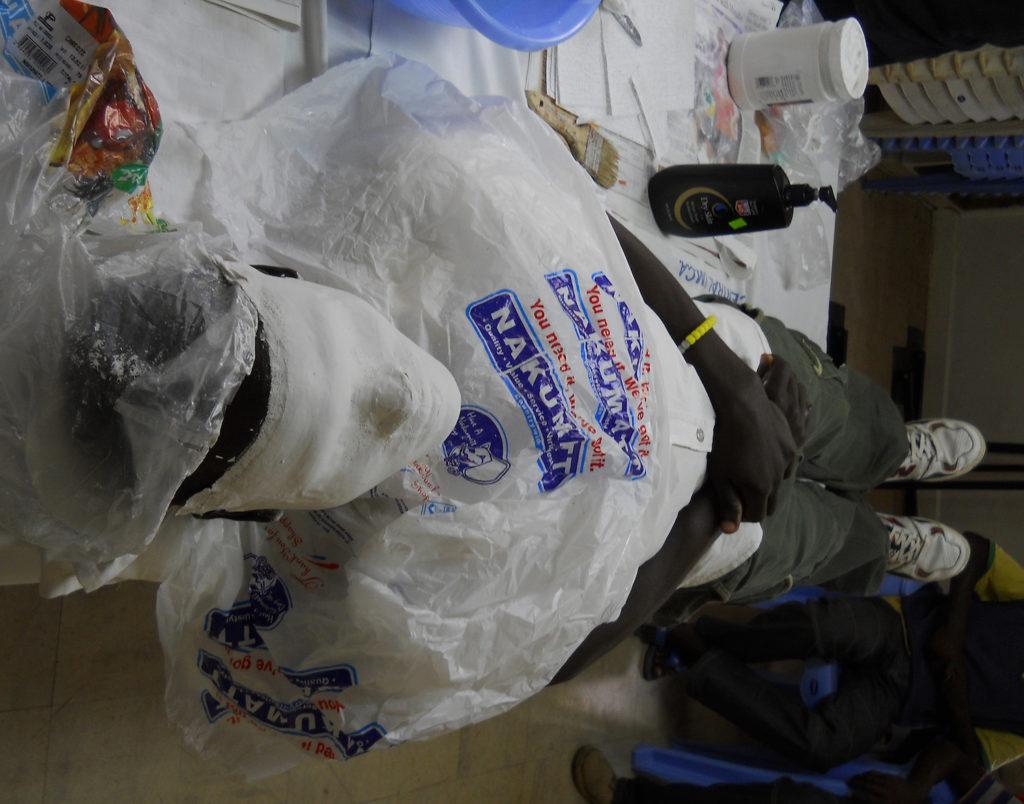
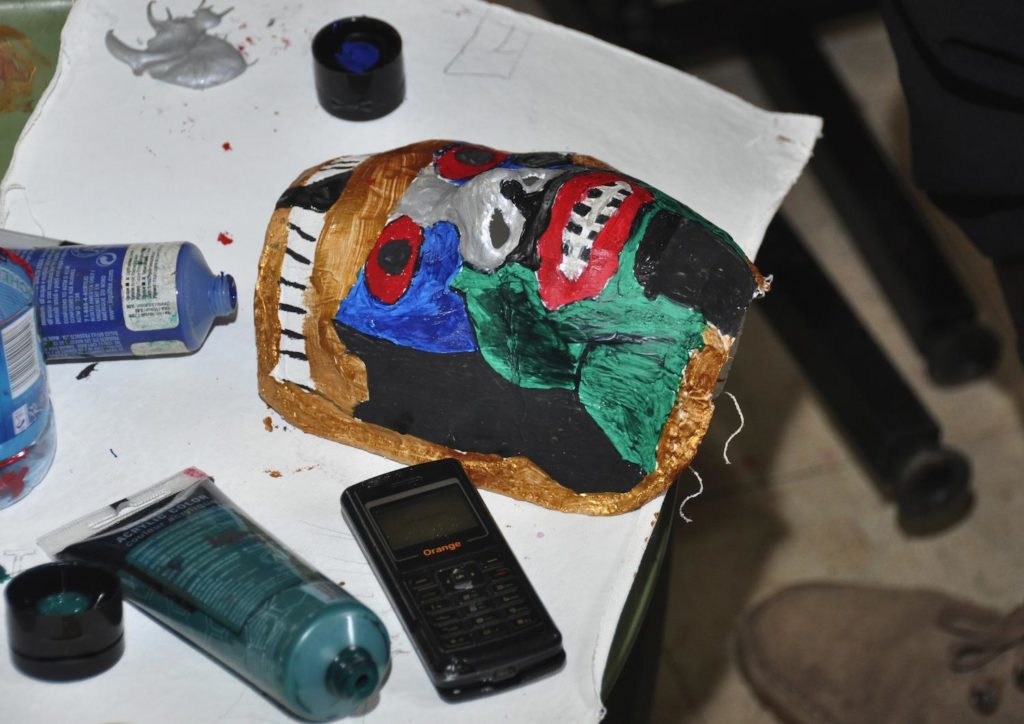
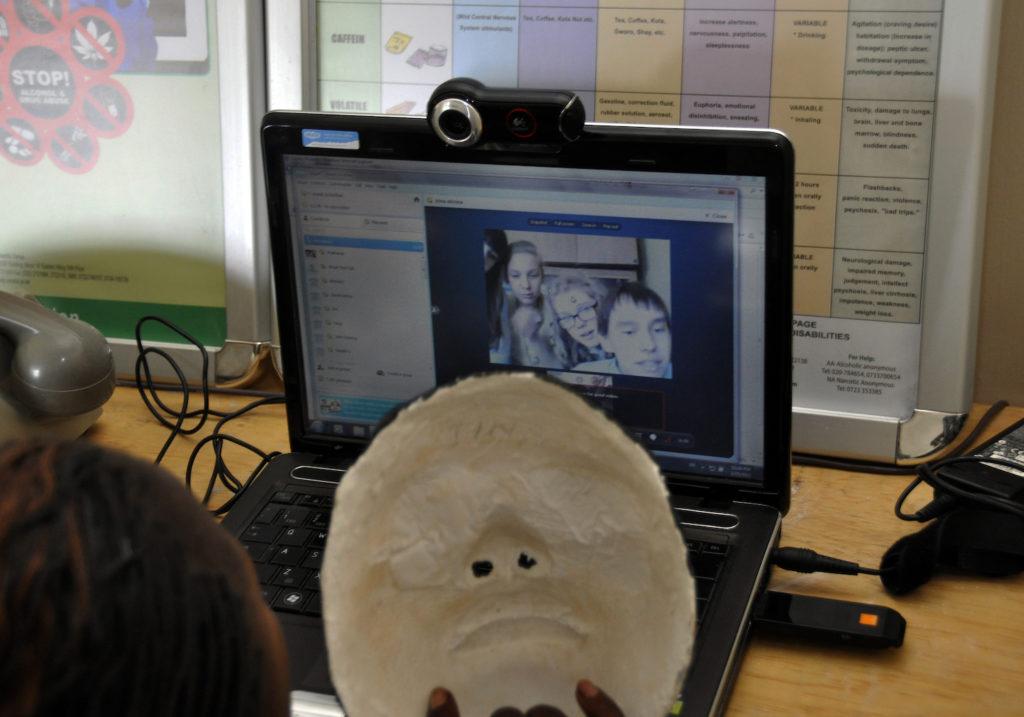
The story of the Nairobi Youth Project began in the USA in 2009 with the workshop program involving secondary schools in the USA (Eleanor Roosevelt High School in New York, St. Paul’s School for Boys and Girls in Baltimore), in Russia (Herzen University in St. Petersburg), and Kenya (Moi Forces Academy in Nakuru, St. Nicholas in Nairobi, Okok Secondary in Gita, and Oasis of Hope in Kisumu).
Our projects were evolving to include not just the personal, social, and political issues that affected the students’ lives, but a new emphasis on the culture and history—what is theirs, what other cultures offer, and how to understand each other’s cultural frameworks.
The groups made masks, took photos, wrote texts that were bound into hardcover books, and produced videos about their lives to share with other groups. Students researched the different countries, reported the information to their classmates participating in the project, and created maps and posters showing what they learned.
The city of Nairobi where our project was, is about 10,000 feet above sea level, making for cool weather and fewer mosquitos, which is why its settlers chose to make it Kenya’s capital. Nairobi is the largest city in Kenya, with a population of just over 3 million in 2009 (more than 4 million in 2021).
It’s a bustling international hub complete with skyscrapers but also air pollution and traffic jams due to poor infrastructure and slums—there are approximately 2.5 million slum dwellers in about 200 settlements in Nairobi, representing 60% of the Nairobi population. And this is where we met the young people who made up the Nairobi Youth Project.
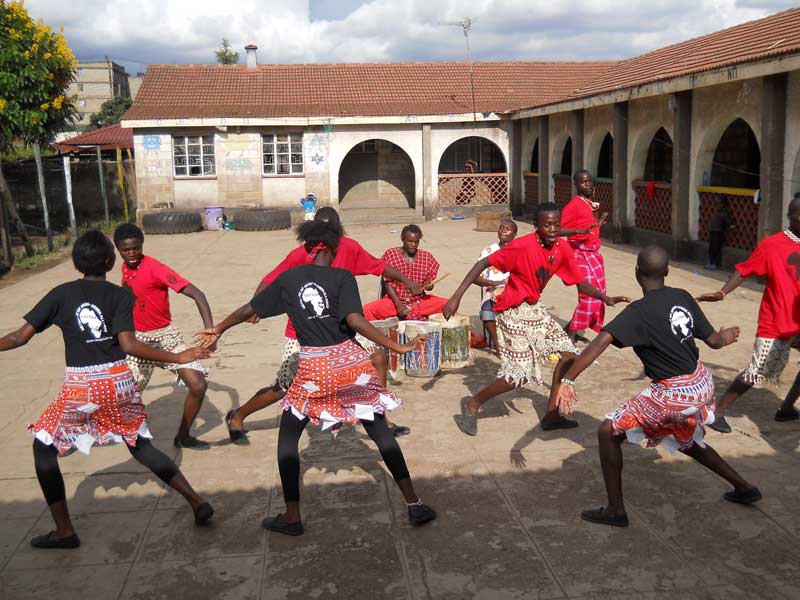
Gym 1, in Velikiy Novgorod used similar concepts and curriculum as Gym 209, St. Petersburg.
Using cameras and video the student-teenagers focused on environmental issues, corruption, waste, and other abuses that affected them as a community and personally. The workshops began at the exhibition site where students interacted with their counterparts’ diaries, film documentaries, and artwork. The students incorporated the exhibition into the storyline of their books and videos. Web conferencing and Q & A became part of the daily process between students in the US and Africa.

In 2009, Kiboko Projects started a workshop program at Gym 209, St. Petersburg, focused on personal, social, and cultural issues affecting youth in Russia.
Students were required to research an issue important to them. Workshops provide mentoring using several concepts such as mask making, creative writing, and the making of hand-made books. Photography, video, and web conferencing connected them with their counterparts in Africa and the US.
The students took photographs and videos around the city of St. Petersburg which became part of their personal books.
The project was presented formally through films and exhibits in both the US and Russia.
In 2010, Kiboko Projects began another workshop in the ongoing discussion between youth and young adults of the USA, Kenya, and Russia. Students at Herzen State Pedagogical University, one of the most distinguished universities in St. Petersburg, Russia, participated in this project that was developed to help them communicate in the English language as they shared their lives and stories with their counterparts.
This program is distinctive by the use of various methods such as mask making, storytelling, visual art, movement and dance, and interactive communication through web conferencing between counterparts in Africa and the US.
Kiboko Projects began working with Wilson Boit Kipketer, a renowned Kenyan athlete, at Riara Springs Academy, Nairobi in 2004. Wilson and the students made masks, viewed books made by US and Russian students, and talked on camera about their families and community.
Wilson talked to the students about his experiences as a medal-winning champion and gave advice on how to succeed. The combination of making masks and books and working with such a powerful influence as Wilson Kipketer had a very strong effect on the children. Tegla Laroupe, a famed marathoner, also participated in the Kiboko Projects.
In 2010, Kiboko Projects collaborated with New Hope Community Project, Kenya to help develop a community youth project involving about 25 teenagers. The project involved the integration of mask making, theater, storytelling, and dance. Kiboko Project’s staff met with the Messengers in the Athi River community to further develop a cultural project for the purposes of educating youth in the local community and schools.
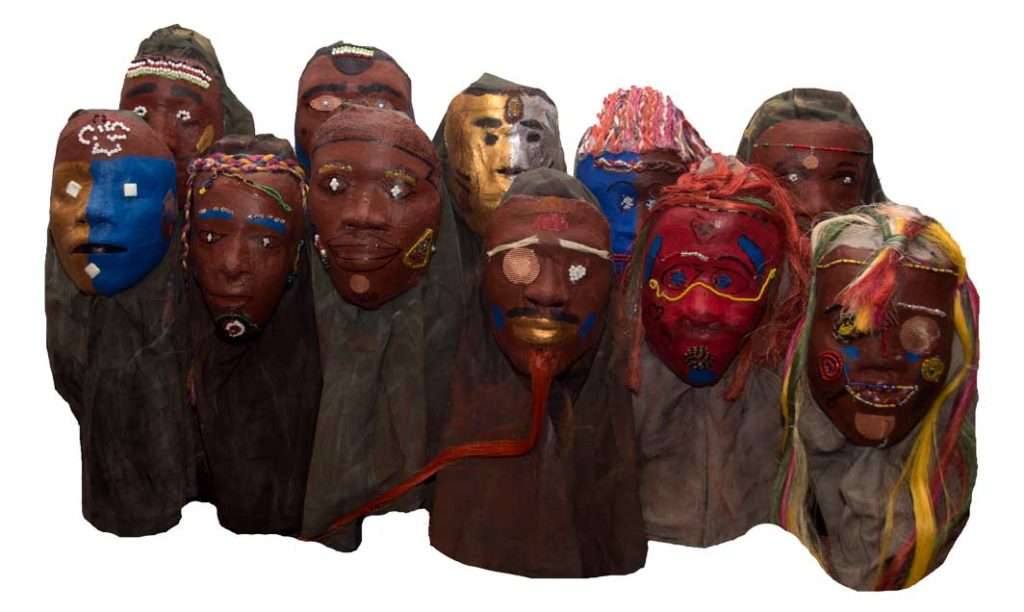
The works displayed in this exhibition were selected from 200 drawings and paintings created in workshops at primary and secondary schools in the Makueni and Machakos Districts of Kenya. This exhibition includes American students’ work from the East and West Village of New York.
The project was organized by artist and photographer Mark Scheflen, the Director of the Visual Arts Program at St. Mark’s Church-in-the-Bowery, New York City. Students from Manhattan made paintings for an exhibition at St. Mark’s Church which later was curated for travel to Kenya. Dr. David Gitari, the Archbishop of Kenya, and Bishop Kanuku of the Machakos District invited Scheflen to present the American kid’s exhibition and to teach a series of art workshops at 15 schools in the Makueni and Machakos Districts.
The plan was simple -after an introduction, lecture, and presentation of the paintings made by American students, Kenyan students were invited to reciprocate with their own compositions. Scheflen supplied paper, pens, crayons, and water paints and told the children they could paint or draw whatever they wanted as long as the work was completed in five weeks for a traveling exhibition to the United States.
Kenyan students were provided with simple, locally purchased art materials, consisting of paper, colored pencils, crayons, watercolors, and brushes. Due to cost constraints, the students were limited to primary colors but were free to mix mediums and colors and to improvise their own tools in any way they chose. And improvise they did, some fashioning paintbrushes out of fiber, clay, and other “found” materials.
The artwork, with its images of wild and domestic animals, local architecture and geography, lifestyles and fashion, traditional rituals, and mythological scenes, are deeply rooted in the physical cultural, and psychosocial landscapes they inhabit. The paintings are not meant to be representative of the artwork of children throughout Africa but of their particular environs. The topographical features that distinguish their region–its proximity to two national parks and to Kilimanjaro—are prominent in their work. Although many of the drawings are ‘western’ in style, they indicate an ongoing connection to traditional life and demonstrate the ability to closely observe and draw inspiration from every aspect of the natural and cultural environment.
From a purely artistic point of view, this collection is singular for the unusually high quality of work. While not totally isolated from modern life, the children do not have ready access to the quality and variety of resources available to urban children–trips to museums, art galleries, and large well-stocked public libraries and bookstores; availability of films and videos on any subject; and easy access to computers and the Internet.
Yet there is no lack of wit, inspiration, imagination, and subtlety in these young artists’ work.
This exhibition has been shown at the United Nations in commemoration of the “Day of the Africa Child”, the Staten Island Children’s Museum, The Central Children’s Room of the Donnell Library, New York City, Hudson Valley Children’s Museum in Nyack, N.Y. The exhibition will continue to travel to the North Museum of History and Science, Old Forge Art Center upstate New York, where students living in the local community near the exhibition sites will be able to reciprocate with their own drawings and paintings.
Additionally, photography workshops will be offered to students so they can make photographs to exchange with the Kenyan students in the Fall of 1999.
The collection traveled internationally through the US, Veliky Novgorod, St. Petersburg, Russia, Kenya, and South Africa for a series of exhibitions in community centers, galleries, and schools. Workshops were held so youth could respond with their own art, face masks, photography, and storytelling using writing, audio, and video. This was the beginning of several new projects, presentations, and exhibitions.
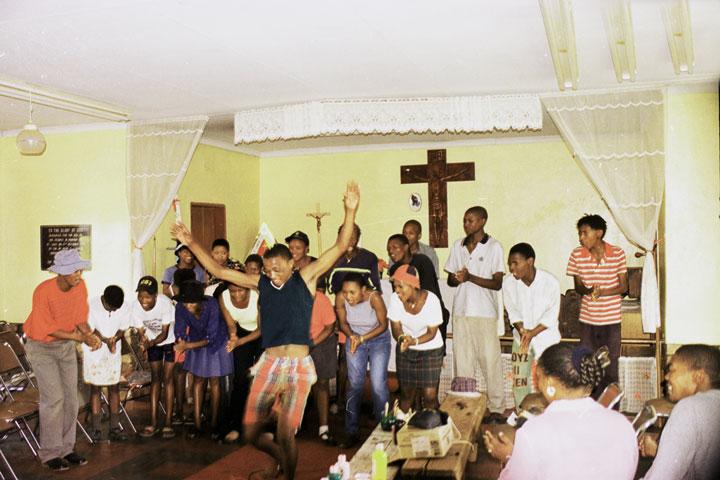
In 2001, Kiboko Projects implemented a cultural exchange program with Klerksdorp-Capetown, South Africa using mask making, writing, photography, and video to capture 15 teenagers’ life stories.
Many of the participants suffer the trauma of post-apartheid, extreme poverty, and HIV/AIDS which was ravaging the country. In organized workshops, the teens created paintings and drawings, face masks, and photographs, and made personal videos reflecting on their personal lives and community.
They performed folk dances and wrote poems. They created a collection of art and videos which was exhibited in the US, Kenya, and Russia. The South Africans became the catalyst for several new projects that were started in the US, Kenya, and Russia.